-
由于含有大量的重金属,不锈钢渣与铜渣中被许多国家归属为危险废物[1-4]。这些危险废物在雨水的淋滤过程中容易进入地下水系统和土壤中,从而对生态环境造成威胁。一般可通过二次回收和固化2种方式解决不锈钢渣与铜渣中的重金属污染问题[5-7]。仪桂兰[8]以粉煤灰和不锈钢渣为原料成功地制备了微晶玻璃为不锈钢渣资源化利用提供了新途径。卜金彪等[9]综合利用不锈钢渣、尾矿及废玻璃制备了主晶相为镁黄长石相微晶玻璃。SOHN等[10]通过改变不锈钢熔渣中Al2O3/SiO2比例,提高富铬尖晶石在熔渣中浸出率,减少熔渣中游离的Cr离子含量,提高了Cr离子的稳定性。MA等[11]以铜渣为原料添加ZnO制备微晶玻璃,研究发现Zn能够有效包裹在晶体结构中,降低了酸碱环境中重金属被浸出的风险。LIU等[12]利用钢渣与粉煤灰制备全固废基微晶玻璃,使Zn、Fe、Mn进入微晶相中对重金属离子进行固化。此外,DENG等[13]、DENG等[14]和DENG等[15]利用铬铁渣制备微晶玻璃使不锈钢渣中的多种重金属结晶为尖晶石,实现多种重金属协同固化。因此,以粉煤灰、不锈钢渣和铜渣制备微晶玻璃可以高值化利用固体废弃物,减少毒性物质的浸出。
微晶玻璃具有较高的机械强度、耐腐蚀性和耐磨性,可替代铸石和耐酸陶瓷板在煤炭、采矿、水泥、机械等工业部门应用。大部分微晶玻璃是通过非均匀形核制备获得,晶核剂是促进玻璃析晶和优化性能的重要物质[16]。DENG等[13]提出了在CaO-MgO-SiO2-Al2O3体系微晶玻璃中Cr2O3容易优先结晶形成尖晶石纳米晶粒作为晶核剂诱导辉石结晶。ZHANG等[17]研究发现Cr2O3能够诱导玻璃分相,降低析晶温度。魏海燕等[18]尝试以微波热处理技术制备微晶玻璃,探究Cr2O3和Fe2O3为晶核剂对微晶玻璃析晶行为的影响。Fe2O3是一种促进微晶玻璃析晶的重要晶核剂,铁离子能够弱化玻璃网络结构,增加非桥氧数量,降低玻璃析晶活化能,促进玻璃析晶[19-20]。因此,金属离子作为形核剂诱导硅酸盐玻璃析晶是制备微晶玻璃的一种优势选择。
目前,主要采用电阻加热方式对微晶玻璃进行热处理,该方法制备微晶玻璃能耗高、热能利用率低,不利于可持续发展。基于废弃物成分以SiO2、CaO、MgO、Al2O3以及Fe2O3为主,适合制备 CaO-MgO-SiO2-Al2O3-Fe2O3(CMASF)体系微晶玻璃。本研究以粉煤灰、不锈钢渣和铜渣为原料采用微波热处理制备矿渣微晶玻璃,拟探究微波热处理过程重金属迁移与固化机制,并分析Fe2O3对辉石微晶玻璃形成过程中的玻璃网络结构变化与结晶规律。
-
采用X荧光光谱仪测试确定粉煤灰、铜渣以及不锈钢渣的化学成分,其结果见表1。本实验中固体废弃物利用率达90%,其中粉煤灰与不锈钢渣的利用比例为55%~65%与15%~25%,铜渣的利用率为0%~25%。其他不满足实验配方成分采用石英砂、CaO、MgO和硼砂补充,实验配方与样品编号如表2所示。
将3种废弃物按配方设计比例称量,添加一定比例的石英砂、CaO、MgO和硼砂补充,混合搅拌1 h。然后将混合物放置在刚玉坩埚内在马弗炉中以1 500 °C熔制3 h,随后将玻璃熔液倒入模具中成型,并在650 °C退火1 h。少量玻璃熔液浇注在冷水中制备水淬渣,采用差示扫描量热法 (Differential scanning calorimeter, DSC) 确定玻璃的热力学参数。本实验采用2.45 GHz微波在1~4 Kw功率中对母相玻璃析晶热处理。微波处理方法为一步晶化法,参考DSC曲线将母相玻璃以3 °C·min−1升温到860 °C并保温1 h制备微晶玻璃样品。
-
采用DSC差示扫描量热仪 (STA 449F3,耐驰,德国) 对水淬渣进行测试,获得微晶玻璃的玻璃转变温度 (Tg) 和析晶峰温度 (Tp) ;氩气气氛保护,升温速率为5 °C·min−1;试样测试温度范围为20~1 200 °C。
通过X射线衍射 (X-ray diffraction, XRD) 分析仪 (Rigku XRD MiniFlex,日本) 测试获得微晶玻璃的晶相结构信息;Cu靶激发X射线,扫描范围10°~90°。
利用傅里叶红外光谱 (Fourier transform infrared, FTIR) 仪 (Invenio,布鲁克,德国) 测试获得母相玻璃与微晶玻璃在400~4 000 cm−1的红外吸收峰。
通过场发射扫描电子显微镜 (Scanning electron microscope, SEM) (Suppra55,蔡司,德国) 在二次电子相模式中观察获得微晶玻璃的微观形貌,并利用能谱仪获得微晶玻璃样品元素分布。
-
采用DSC测试了水淬渣的结晶温度的变化,确定了母相玻璃的晶化处理温度。图1显示母相玻璃的转变温度 (Tg) 在650~700 °C,玻璃析晶温度 (Tp) 在830~900 °C。随铜渣质量分数的增加,铜渣中的Fe2O3对母相玻璃的析晶温度产生重要影响,Tg与Tp均呈现先降低后升高。前人研究发现,Fe2O3对玻璃结构有双重调控作用,当微晶玻璃中含有少量的Fe2O3主要以[FeO6]形式存在,其能够破坏Si-O网络结构,降低玻璃网络的连通性,使玻璃发生解聚促进玻璃析晶[19]。当玻璃中含有过多Fe2O3,形成[FeO4]结构单元对玻璃网络进行补充,增加玻璃聚合度抑制玻璃析晶[20]。可见,加入少量的铜渣时,Fe2O3以[FeO6]形式存在,扮演玻璃网络改性剂的角色,降低玻璃析晶温度。当铜渣添加量到15%时,玻璃基体中存在过多的Fe2O3,形成[FeO4]结构对玻璃进行补网,增加玻璃的聚合度,抑制玻璃的析晶。
玻璃的稳定性可以用△T (△T=TP−Tg) 表示,根据DSC测试结果获得的不同样品的玻璃稳定性变化情况列于表3。随着铜渣质量分数增加,△T由183 °C降低到176 °C,当铜渣质量分数为5%,△T值最低。当铜渣质量分数为15%,△T呈现增长趋势为190 °C,当铜渣质量分数为25%,△T为198 °C。△T值越大玻璃的稳定性越强,由此可知玻璃的稳定性先降低后升高。这与通过DSC曲线确定了微晶玻璃结晶温度先降低后升高的趋势一致。玻璃稳定性、结晶温度与玻璃网络聚合度有关,玻璃网络聚合度越高其稳定性越强,并且微晶玻璃析晶温度也会提高。因此,少量Fe离子以[FeO6]破坏玻璃网络连通性,过多的Fe离子以[FeO4]对玻璃进行补网,玻璃稳定性先降低后增加。
-
玻璃的结晶行为与玻璃的网络结构密切相关,因此采用红外光谱分析了不同样品的玻璃网络结构,其结果如图2所示。从图2可以看出,红外光谱显示3个典型特征吸收带,430~560 cm−1、600~760 cm−1和730~1 200 cm−1,分别代表了Si-O-Si、Si(T)-O键的弯曲振动和玻璃网络Qn结构单元的对称伸缩振动。随着铜渣质量分数增加到25%时,在580 cm−1形成1个独立的吸收峰,代表Fe-O键的振动。
玻璃网络的聚合度反应了微晶玻璃的结晶趋势,通常用不同Qn的相对含量 (n,表示[SiO4]的桥接氧量) 来评价。其中,Q0 (SiO44−)、Q1 (Si2O76-) 、Q2 (Si2O64-) 、Q3 (Si2O52−) 、Q4 (SiO2) 结构单元的红外特征吸收峰分别出现在840~890 cm−1、900~950 cm−1、960~1 030 cm−1、1 050~1 100 cm−1和1 160~1 190 cm−1范围[21-22]。采用高斯微积分方法对800~1 200 cm−1的Qn的吸收峰进行解卷积,获得的不同Qn的吸收峰面积,如图3所示。通过玻璃中非桥氧键占总硅氧四面体结构的含量值可以反映玻璃网络的解聚度 (DOP) 。玻璃网络的解聚度由式DOP = 4×Q0+3×Q1+2×Q2+1×Q3+0×Q4计算获得,DOP值见表4。
从表4可看出,随着铜渣含量的增加,母相玻璃的DOP值先增大后减小。C5样品的DOP值最大是1.89。对比DOP值,可知C15、C25样品的玻璃网络聚合度明显高于C0和C5样品。此外,C15、C25样品中Q4的占比明显多于C0和C5样品,Q4代表了完全聚合的SiO2,其含量增加导致玻璃网络聚合度增强。由此可知,母相玻璃中含少量Fe2O3时,Fe离子能够破坏[SiO4]网络结构,降低玻璃粘度。当玻璃中Fe2O3含量过多时,样品中形成[FeO4]对玻璃补网,从而提高玻璃聚合度。
-
图4为微波晶化热处理获得微晶玻璃样品的XRD图。XRD图谱显示不同样品均出现明显的结晶峰,形成以辉石相(Mg,Fe,Al)(Ca,Mg,Fe)(Si,Al)2O6 (PDF:88-0856)为主晶相,磁铁矿Fe3O4 (PDF:89-0691)和尖晶石Fe(Cr,Mg)2O4 (PDF:89-2618)为副相的复合相微晶玻璃。随着铜渣质量分数提高,辉石相的衍射峰强度先增强后逐渐降低,并且磁铁矿与尖晶石相的衍射峰强度逐渐增强。由XRD图谱可看出,铜渣质量分数为5%时,其中的Fe2O3可以作为晶核剂促进辉石结晶。然而,随着铜渣质量分数增加,母相玻璃中含有较多的Fe离子,一部分Fe3+与Fe2+结合并结晶形成磁铁矿相,另一部分Fe3+与Mg2+、Cr3+、Zn2+耦合生成尖晶石析出。
图5为微波晶化热处理微晶玻璃样品的微观形貌图。从图中观察到C0、C5、C15样品形成了均匀分布辉石粒状晶,且晶粒尺寸逐渐变小。由于Fe2O3质量分数增加使玻璃中形核质点增多,从而使辉石晶粒细化。此外,微波热处理具有均匀加热的特点,能够促使辉石均匀生长。相关微波法制备微晶玻璃研究表明,微波效应不仅降低了玻璃析晶活化能提高析晶效率,而且促使辉石晶粒均匀分布[23]。然而,C25样品中出现了大量磁铁矿枝状晶,这与玻璃中的铁含量增多有关。微晶玻璃中出现大量磁铁矿枝晶分布,一方面是因为磁铁矿具有较强的析晶能力与较低的结晶温度,能够在母相玻璃中优先析晶;另一方面,磁铁矿的析晶使玻璃中阳离子含量减少,增加玻璃粘度,使辉石的结晶受到抑制。
图6为微晶玻璃样品的红外光谱图。红外光谱中显示在400~600 cm−1、600~650 cm−1、760 cm−1和830~1 250 cm−1形成典型的吸收峰,分别代表Si-O结构的弯曲振动、Si-O-Si结构的对称弯曲振动、Si(T)-O对称伸缩振动以及各个不同Qn结构的伸缩振动[15, 19-20]。样品晶化热处理后,在465 cm−1与 538 cm−1形成强的Si-O-Fe比肩峰。760 cm−1处Si(T)-O结构单元的红外吸收峰减弱,结合XRD可认为,Fe3+在玻璃析晶过程逐渐从母相玻璃中偏析形成了磁铁矿与富铁相尖晶石,使玻璃中的Fe3+减少,导致Si(T)-O结构红外吸收峰强度减弱。另外,830~1 250 cm−1范围的Qn的红外吸收峰向低波数偏移,表明母相玻璃在微波辅助热处理过程发生了结构重组。
在CaO-MgO-SiO2-Al2O3-Fe2O3体系矿渣微晶玻璃结晶过程,铜渣中的氧化铁在高温下不稳定,容易以Fe2SiO4形式存在,破坏硅氧四面体网络连通性,降低玻璃粘度[24]。母相玻璃在结晶过程,铁离子迁移并分相成Fe3O4与Fe2O3,反应过程见式 (1)~式 (3) 。
根据实验结果可以推断,母相玻璃在结晶过程,少量的铁离子发生式 (1) 反应,生成Fe2O3。随着Fe2O3增加,其与玻璃中的MgO、CaO、SiO2耦合反应,发生式 (2) 反应生成辉石相。当铁离子含量过多时,式 (3) 反应优先于式子 (1) 反应生成Fe3O4,在微晶玻璃中结晶形成磁铁矿。
-
图7显示了微波处理微晶玻璃中尖晶石相的微观形貌与元素分布。从图中可看出,尖晶石在微晶玻璃中发生偏析,C0、C5、C15样品中尖晶石形成独立的结晶团聚体分布在辉石相与玻璃相之间。在能谱图中显示尖晶石存在区域,主要以O、Cr、Mn、Fe、Zn、Mg元素富集。由此可推断,不锈钢渣与铜渣中的重金属离子进入尖晶石相。然而,C25样品未发现尖晶石在微晶玻璃中偏析。结合能谱图分析可认为,过多的Fe、O离子富集形成了磁铁矿,而Cr、Mn、Zn、Mg以同构体的形式进入磁铁矿相。进一步观察发现,C0、C5、C15样品尖晶石富集区域出现了较大的辉石晶体。这说明,尖晶石结晶使离子扩散增加了玻璃中结构缺陷,降低玻璃内的局部析晶活化能促进辉石生长发育。
为研究重金属的迁移规律,进一步对重金属离子在微晶玻璃中离子迁移规律建立了模型,如图8所示。从图8 (a) 可见,尖晶石周围密集分布了一层不规则的细小辉石晶粒,辉石晶体依附尖晶石生长并对尖晶石形成了完全包裹状态。根据前人研究可知,在辉石微晶玻璃中添加Cr2O3容易结晶生成富Cr尖晶石相,尖晶石可为辉石析晶提供形核质点,使辉石外延尖晶石结晶[25-26]。在本研究中发现,尖晶石能够作为晶核剂促进辉石析晶。然而,以尖晶石为形核质点结晶的辉石晶粒都较为细小 (图7,C0、C5、C15) ,是由于大颗粒尖晶石的形成消耗了大量的阳离子 Cr3+、Mn4+、Fe3+等,尖晶石周边阳离子缺乏导致玻璃粘度增加,从而辉石晶体生长缓慢晶粒尺寸较小。此外,微波晶化热处理样品中尖晶石为无规则的形态,无规则的边缘提高了晶界结构缺陷程度,增加了辉石外延尖晶石结晶生长的几率。这导致了尖晶石被细小的辉石晶粒包裹,形成稳定的“核-壳”结构,结构模型如图8 (b) 所示。辉石微晶玻璃中重金属Cr、Mn进入尖晶石相被耐腐性优良的辉石包裹降低了重金属离子不易被浸出的效率[14]。本研究中,不锈钢渣与铜渣中的重金属离子迁移进入尖晶石相或磁铁矿,在微晶玻璃中尖晶石、磁铁矿晶体被辉石与玻璃包裹形成双重屏蔽,提高了重金属的固化效率。因此,通过微波热处理工艺制备微晶玻璃是有效的重金属固化方法。
-
1) 利用粉煤灰、不锈钢渣和铜渣制备辉石相矿渣微晶玻璃。其中,添加质量分数5%的铜渣降低玻璃聚合度,提高辉石析晶能力。然而,当铜渣质量分数超过15%,铁离子浓度过饱和,促进磁铁矿相结晶,辉石析晶受到抑制。同时,Zn、Mn对[FeO6]或Cr对[FeO4]中的Fe离子进行同构取代,形成(Mg, Fe, Zn, Mn)(Fe, Cr)2O4尖晶石。
2) 微波晶化热处理使不锈钢渣与铜渣中的Cr2O3、MnO2、ZnO、Fe2O3结晶形成尖晶石和磁铁矿。在矿渣微晶玻璃中尖晶石为辉石提供形核质点,诱导辉石外延尖晶石析晶形成“核-壳”结构,使重金属离子有效固化。
Microwave treatment of various solid wastes to prepare glass-ceramics
- Received Date: 14/10/2022
- Available Online: 26/02/2023
-
Key words:
- Slag glass-ceramics /
- Microwave treatment /
- Augite /
- Spinel /
- Heavy metal curing
Abstract: Taking the fly ash and the slag of the stainless steel, the copper slag as raw materials, slag glass-ceramics was prepared through the combination of the method of casting and microwave heating, and the purpose of the paper was to study on the crystallization characteristics and the migration law for heavy metal existed in glass-ceramics made of slag by the addition of copper slag(Fe2O3). The results showed that Fe2O3 in copper slag had a regulatory effect on glass-ceramics crystallization while the addition of 5% copper slag would forward augite crystallization. However, over 15% that would lead to the crystallization of magnetite, and augite crystallization would be inhibited. The heavy metals Zn, Mn and Cr ions in the slag of the stainless steel and the copper slag would be transferred by migration into spinel during the glass crystallization process, while the spinel provides nucleation points for augite, which would induce the crystallization on epitaxial spinel for augite. Thru augite wrapping of the spinel to form a core-shell structure in slag glass-ceramics, it would lead to an effective curing of the heavy metal cation. The results of this study can provide a reference for highly preparing of the slag glass-ceramics and the curing for heavy metal from a variety of solid wastes.






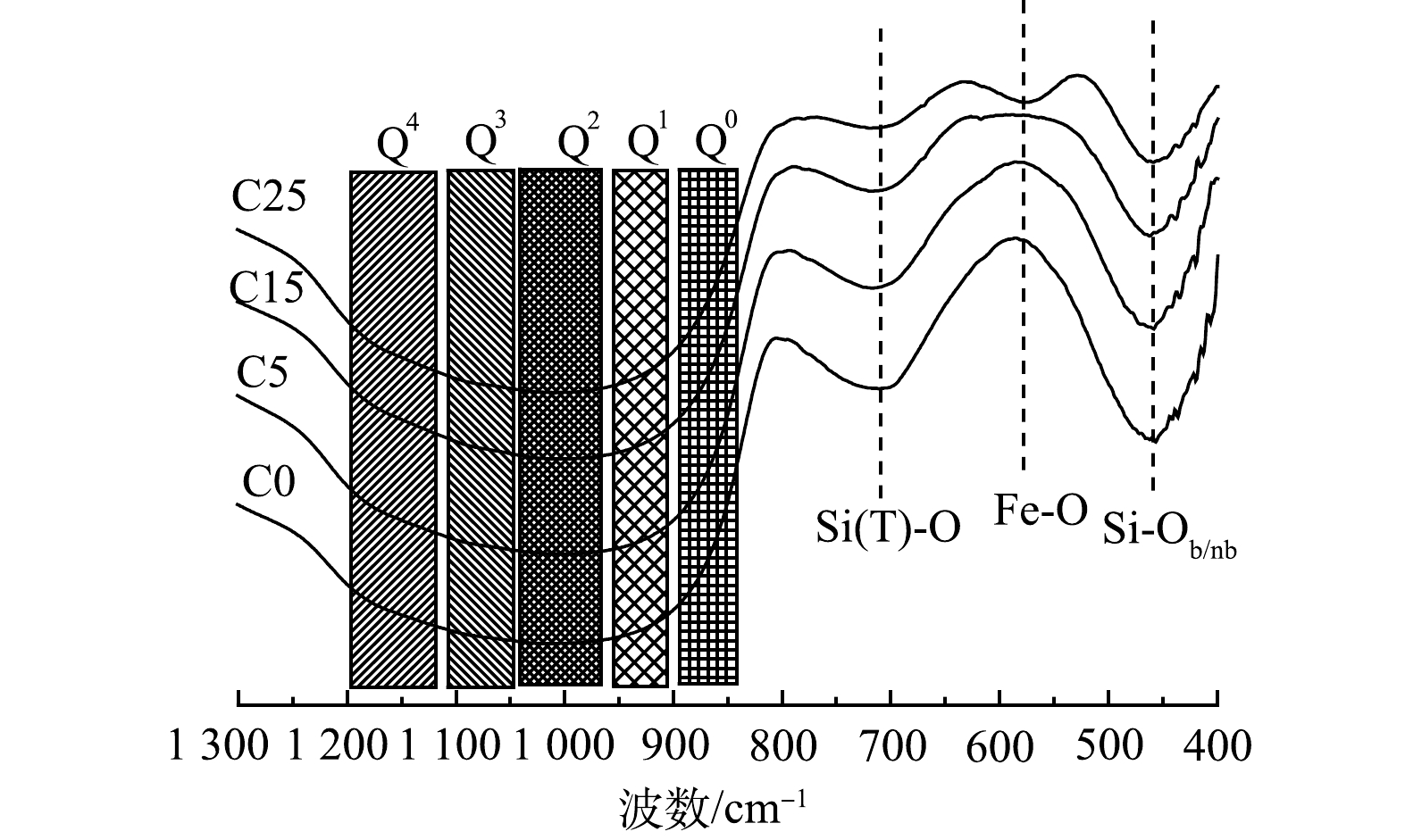
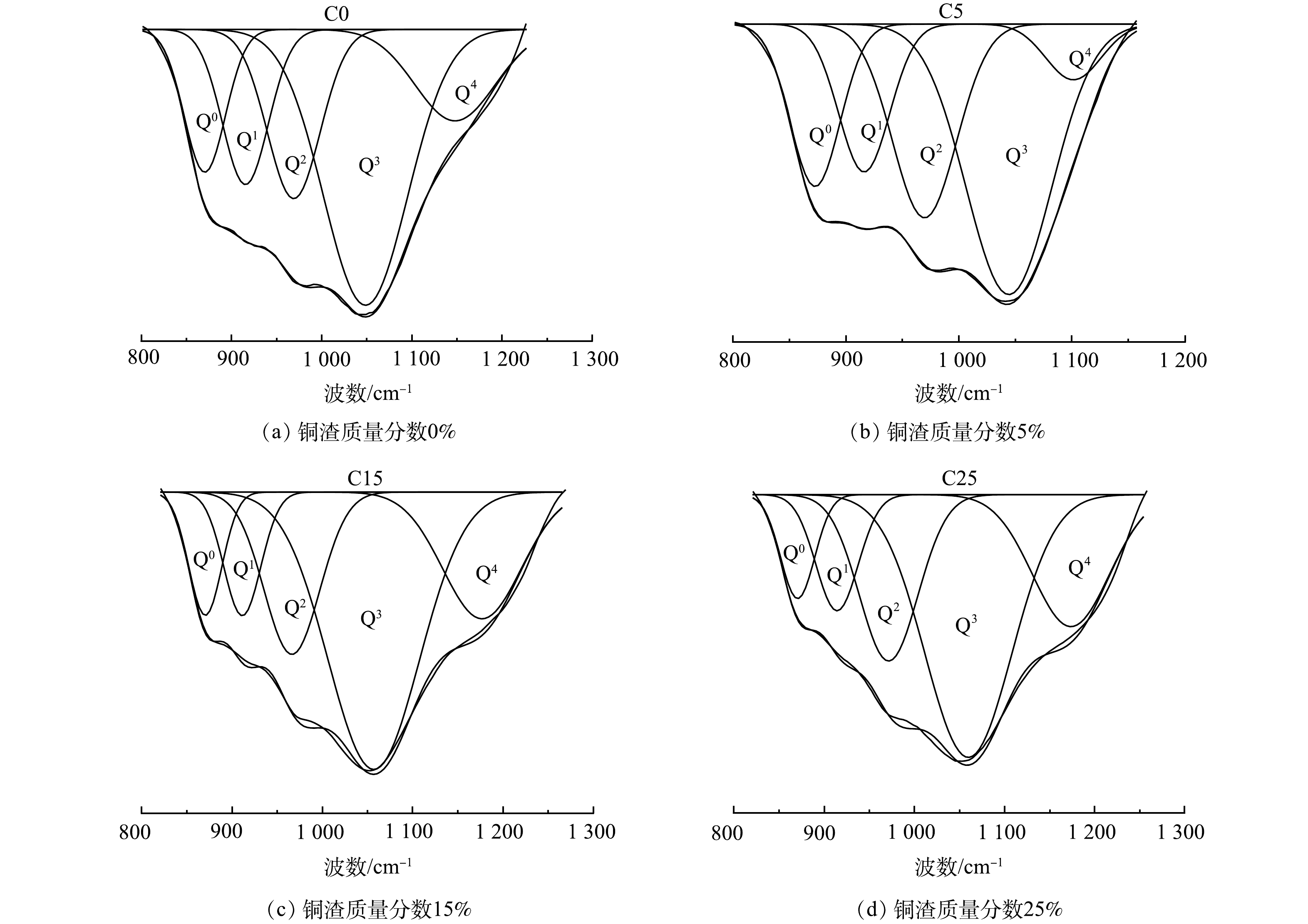
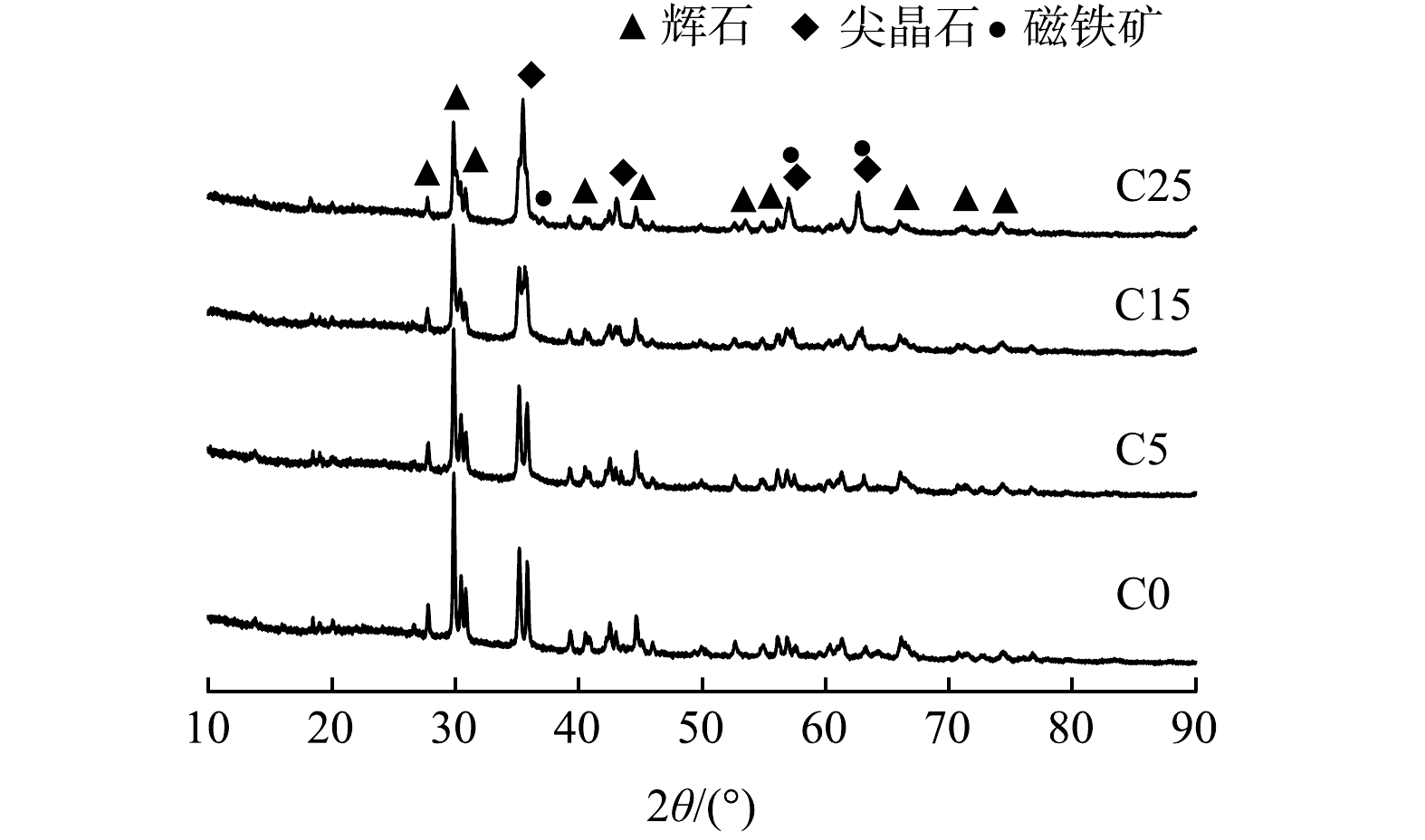
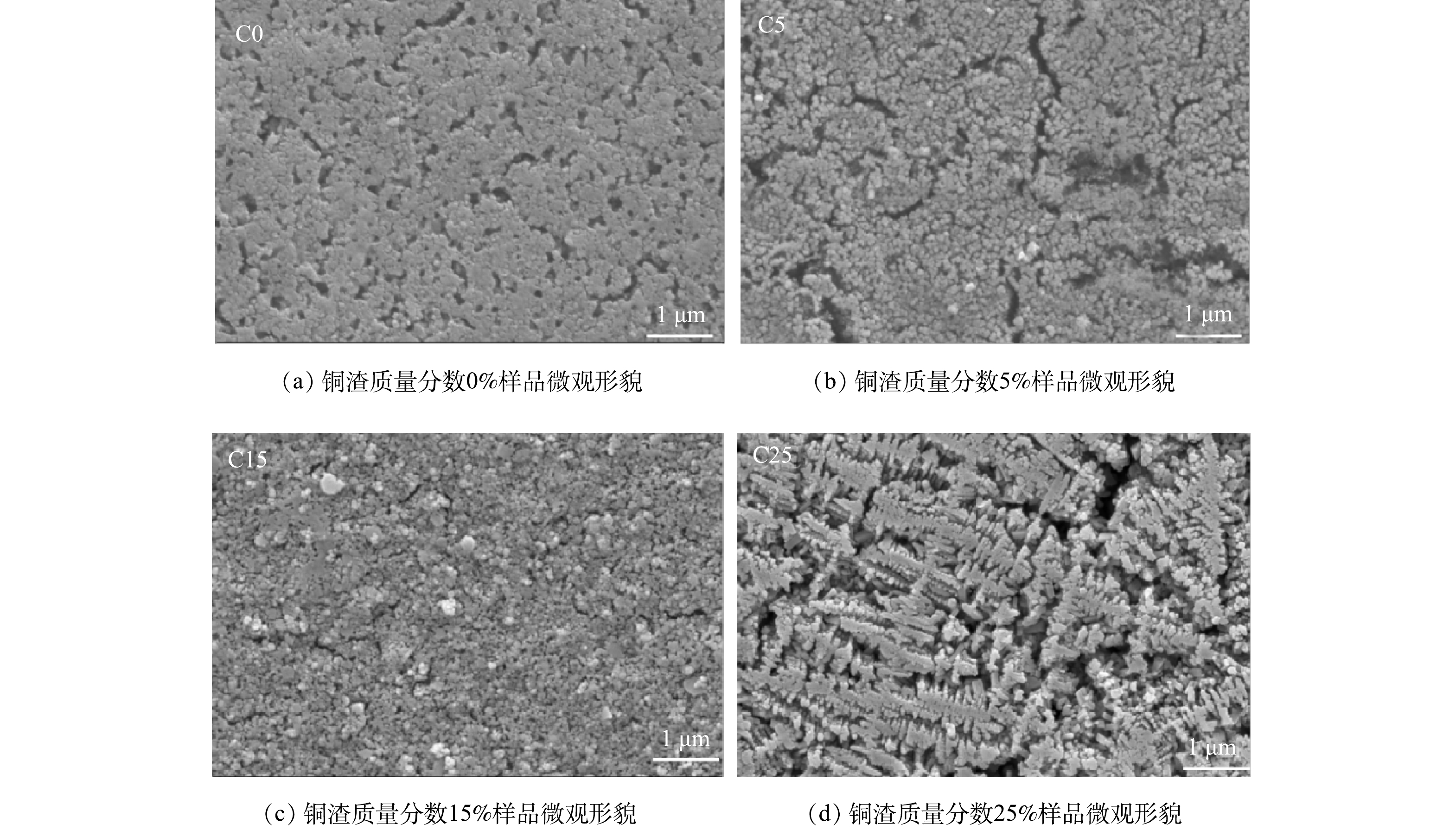
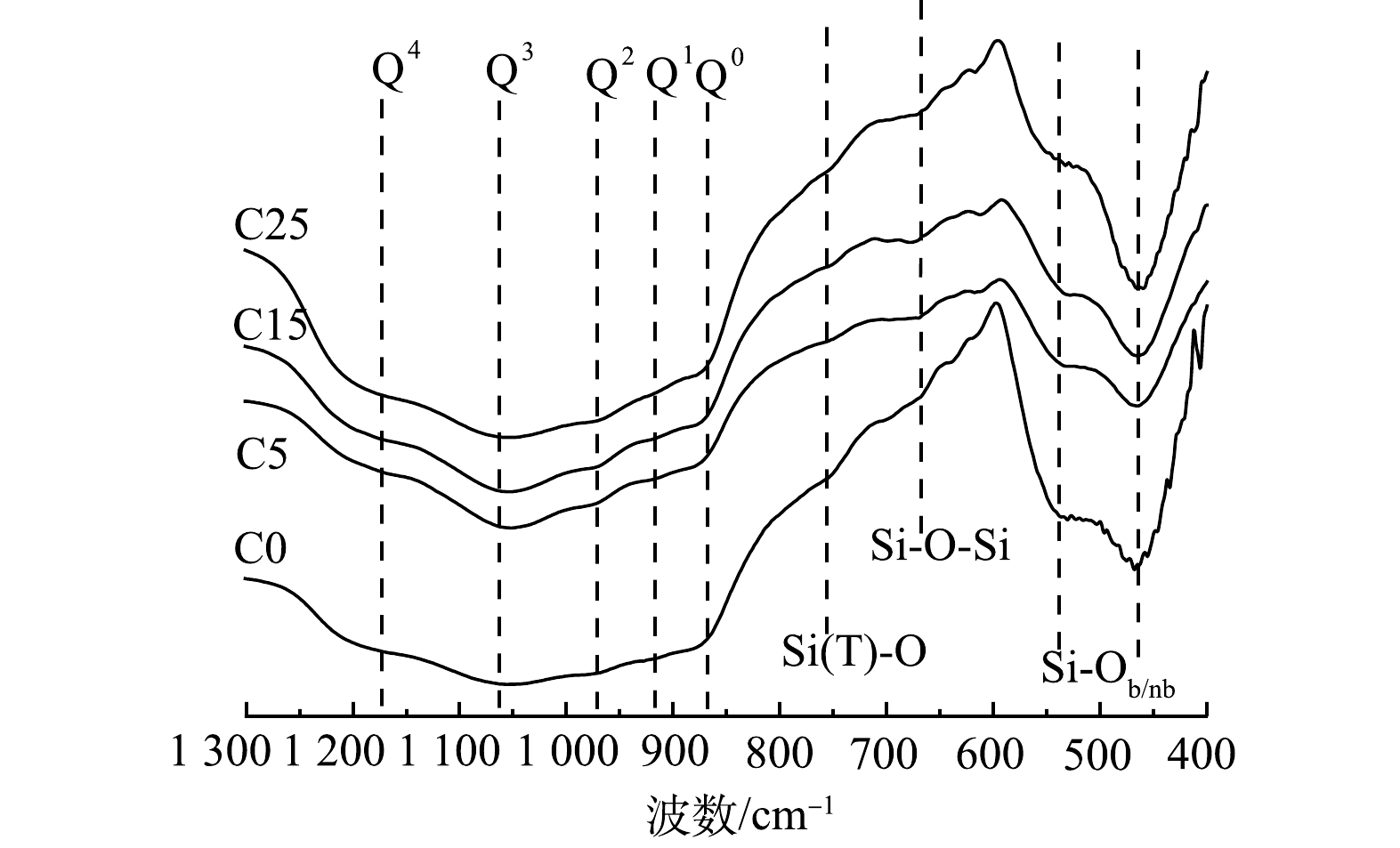


 DownLoad:
DownLoad:
